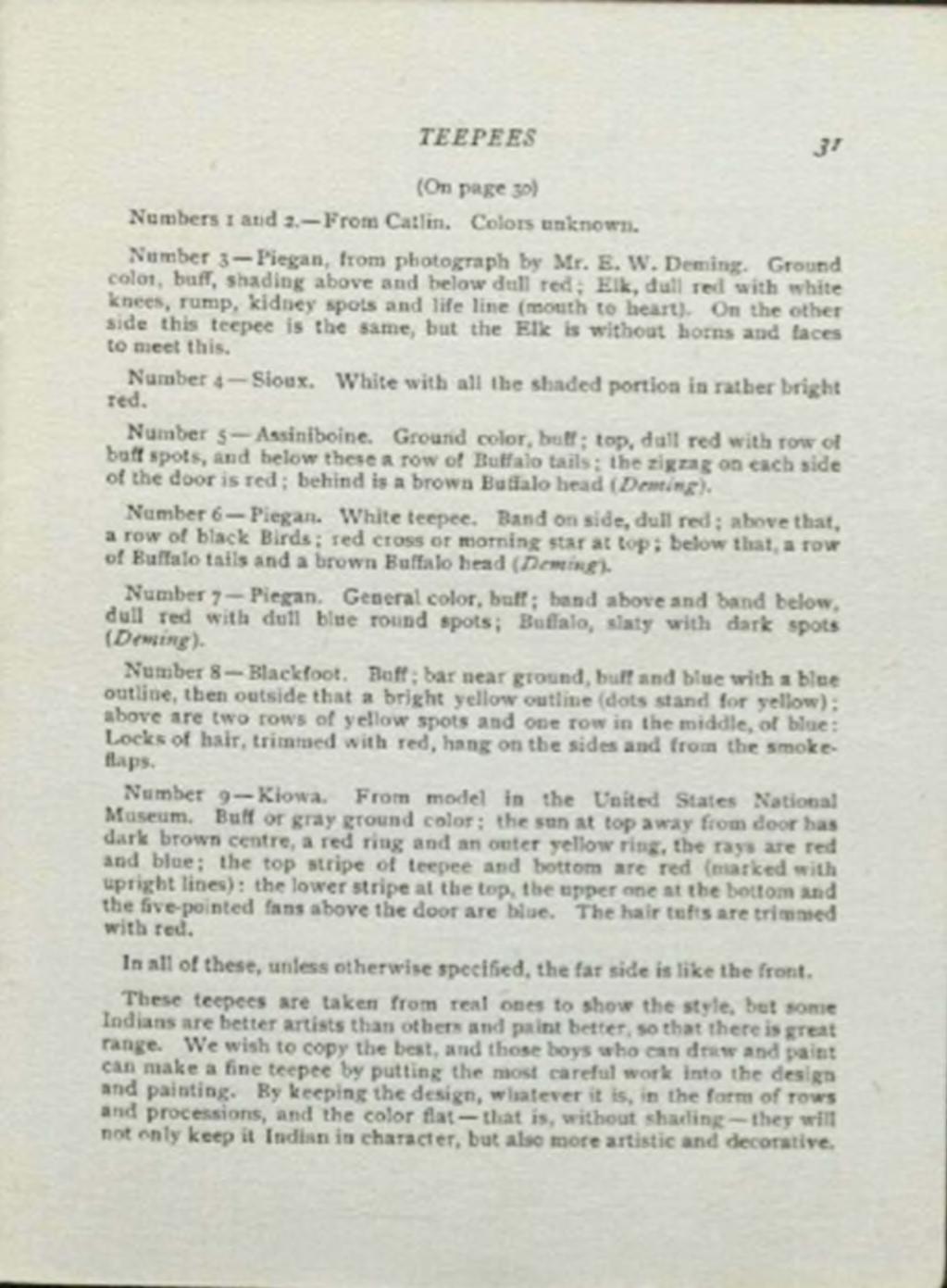Pokračování textu ze strany 31
Numbers 1 and 2 — From Catlin. Colors unknown.
Number 3 — Piegan, from photograph by Mr. E. W. Deming. Ground color, buff, shading above and below dull red; Elk, dull read with white knees, rump, kidney spots and life line (mouth to heart). On the other side this teepee is the same, but the Elk is without horns and faces to meet this.
Number 4 — Sioux. White with all the shaded portion in rather bright red.
Number 5 — Assiniboine. Ground color, buff; top, dull red with row of buff spots, and below these a row of Buffalo tails; the zigzag on each side of the door is red; behind is a brown Buffalo head (Deming).
Number 6 — Piegan. White teepee. Band on side, dull red; above that a row of black Birds; red cross or morning star at top; below that a row of Buffalo tails and a brown Buffalo bead (Deming).
Number 7 — Piegan. General color, buff; band above and band below, dull red with dull blue round spots; Buffalo, slaty with dark spots (Deming),
Number 8 — Blackfoot. Buff; bar near ground, buff and blue with a blue outline, then outside that a bright yellow outline (dots stand for yellow); above are two rows of yellow spots and one row in the middle, of blue; Locks of hair, trimmed with red, hang on the sides and from the smoke-flaps.
Number 9 — Kiowa. From model in the United States National Museum. Buff or gray ground color; the sun at top away from door has dark brown centre a red ring and an outer yellow ring, the rays are red and blue; the top stripe of teepee and bottom are red (marked with upright lines); the lower stripe at the top, the upper one at the bottom and the five-pointed fans above the door are blue. The hair tufts are trimmed with red.
In all of these, unless otherwise specified, the far side is like the front.
These teepees are taken from real ones to show the style, but some Indians are better artists than others and paint better, so that there is great range. We wish to copy the best, and those boys who can draw and paint can make a fine teepee by putting the most careful work into the design and painting. By keeping the design, whatever it is, in the form of rows and processions, and the color flat — that is, without shading — they will not only keep it Indian in charater, but also more artistic and decorative.
